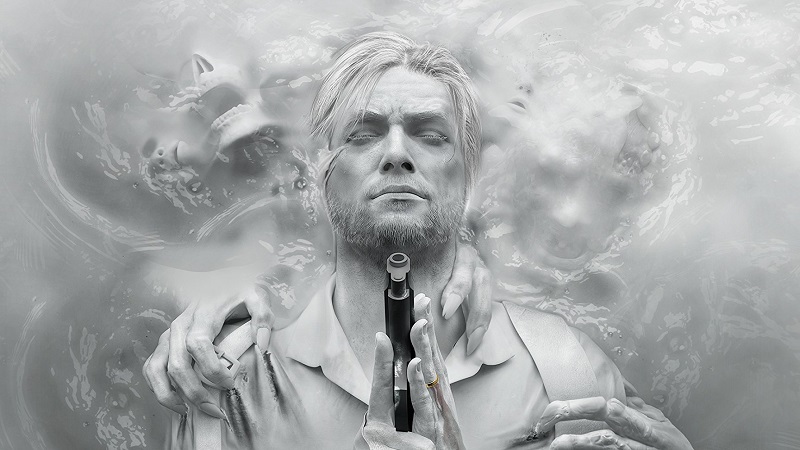The Evil Within 2 is a survival horror third-person action adventure game available from retail stores and for download from the PlayStation Store for the PS4. The Evil Within 2 is developed by Tango Gameworks that was founded in 2010 by Shinji Mikami who is known for bringing the terrifying atmosphere to the survival horror genre in the form of directing and producing Resident Evil in 1996 followed by retaining those creative roles in 1999 for Dino Crisis in addition to being involved in numerous other Resident Evil and Dino Crisis games in such capacities as producer, executive producer, designer, advisor and supervisor, while also directing the original remake of Resident Evil in 2002 and Resident Evil 4 in 2005. The Evil Within 2’s prequel was originally titled PsychoBreak; winning a variety of awards in the process of being announced at E3 2013 including PC Gamer’s Best Action Game and Neoseeker’s Best Original Game as well as making the Best of E3 Selection from CVGames, Telegraph and USA Today. Can The Evil Within 2 improve upon its 2014 prequel, while recreating the sense of atmosphere that Shinji Mikami invigorated in Resident Evil and Dino Crisis?
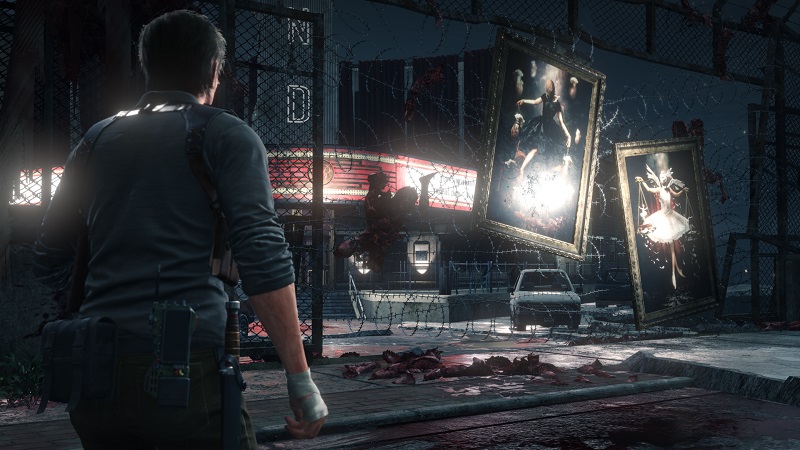
The story unfolds throughout film stylised chapters with the story revolving around detective Sebastian Castellanos being provided with a chance to save the daughter who he thought he had lost by a mysterious corporation known as MOBIUS. Having thought he had lost everything; this is Sebastian’s last chance for redemption which he must take at all costs by descending into MOBIUS’ STEM technological environment named Union and attempting to overcome every obstacle in his path to make it out alive with his daughter.
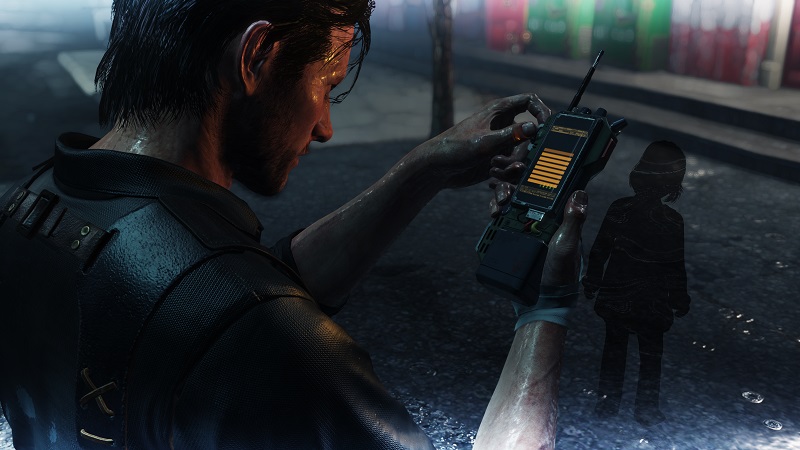
The Evil Within 2’s story contains many mission objectives and even side missions which can be found by scanning for resonance of past events that have happened within STEM via Sebastian’s communicator which holds clues to guide him in the right direction of his investigation into why STEM is seemingly unfolding at the seams.
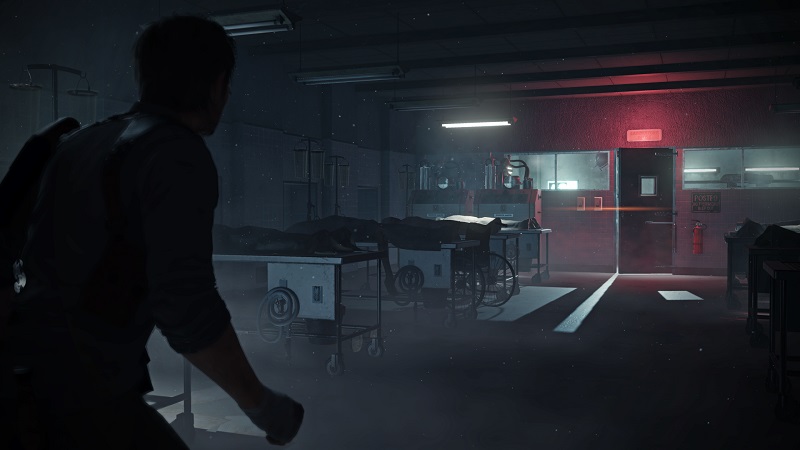
New Game Plus is unlocked after completing the story on any difficulty level in which new features such as gear, outfits and weaponry will be introduced, while the quantity of weapon parts and green gel are increased during the next playthrough to assist in upgrading Sebastian’s abilities, although players will receive greater rewards for completing the story on a harder difficulty level.
Numerous collectibles are strewn throughout the environments including photographic slides which can be viewed on the projector in Sebastian’s office; files such as photos, letters, journals, communicator logs, reports and more besides; and residual memory locations that usually depict the disturbingly gory body of a MOBIUS soldier; which collectively assembles a back story to the events taking place within STEM. However, there are further collectibles in the form of mysterious objects that are hidden in areas that have to be thoroughly explored to find which are all Easter Eggs as they relate to Bethesda’s other big franchises such as the mask of Corvo Attano from Dishonored, a Panzerhund model from Wolfenstein: The New Order, a Vault Boy bobblehead from the Fallout series and more besides.
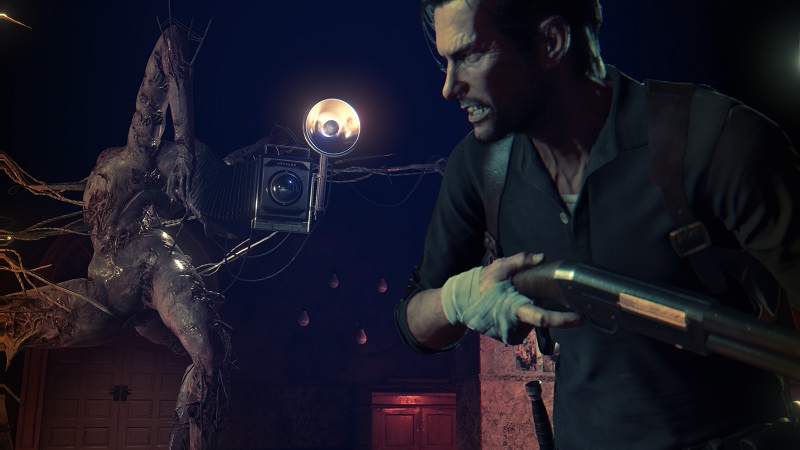
Sebastian Castellanos is a dishevelled man; having recurring nightmares about the death of his daughter in-between drinking from the bottom of the bottle until he is contacted by Kidman and given his mission to help MOBIUS and find his daughter in the process, although Sebastian definitely has reservations about working with Kidman as there is some tension between the two of them.
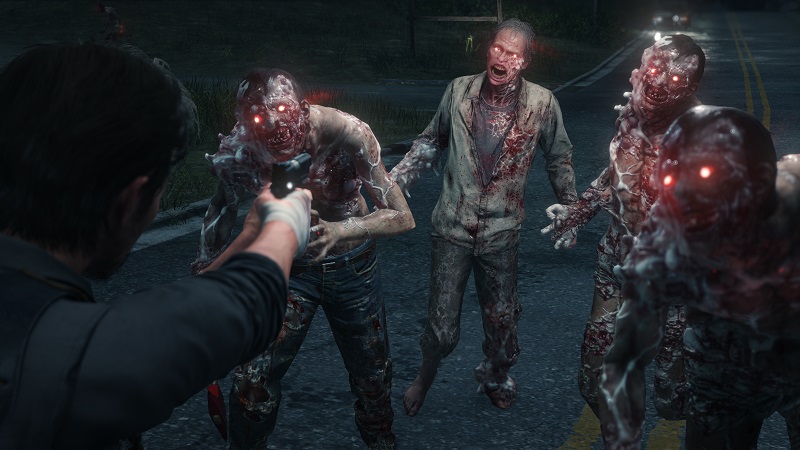
Enemy design is rather hideous in the sense of how players would anticipate enemies to look in a survival horror game with a gigantic female enemy named Guardian towering at around 8 feet tall wielding a saw blade as it runs at Sebastian whilst giggling, while a common yet scary enemy is The Lost and Hysterics which have a craving for feeding on human flesh, alongside a vast number of enemy bosses that are just as strong and ferocious as Guardian. Enemies are drawn to noise, therefore crouching is essential when attempting to perform a stealth attack, although a different strategy is to make noise by throwing bottles in a distant direction to throw enemies off your position. There are three icons that gradually show an escalation in the awareness of enemies; as a half open eye will show that a nearby enemy is suspicious of your presence, while a fully open eye appears when an enemy is fully aware of your location and a speaker icon provides an indication when an enemy has heard your movements.
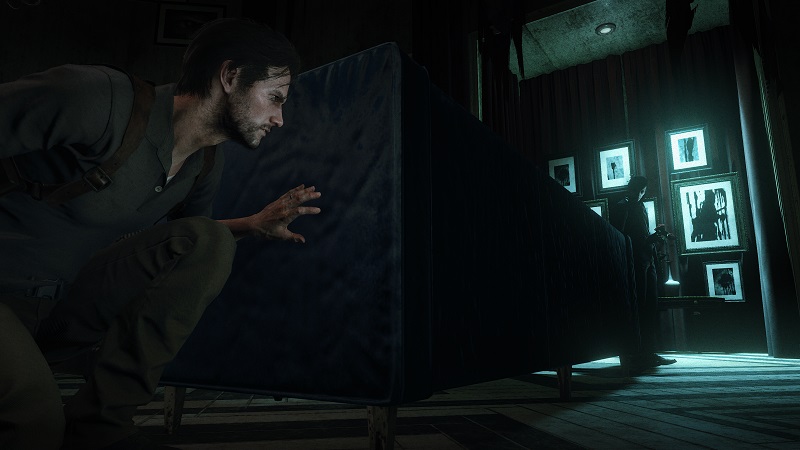
The concept of the environment design in itself is very interesting; especially considering that STEM is a shared consciousness in which MOBIUS plan to have millions of people connected to eventually. STEM’s world known as Union is a place were a single person’s happiness is delight for everyone; kind of reminiscent to the Framework in Marvel’s Agents of Shield, minus the life model decoys walking around in their place. Union is a small rural town on the surface, but harbours many secrets when explored. Objects within your surrounding environments such as walls and furniture can be used to your advantage as there is a cover system that allows you to manoeuvre along the width of an object and around the side of it. Save terminals are essentially the equivalents of Resident Evil’s ink ribbons as players can only save when they have found a terminal.
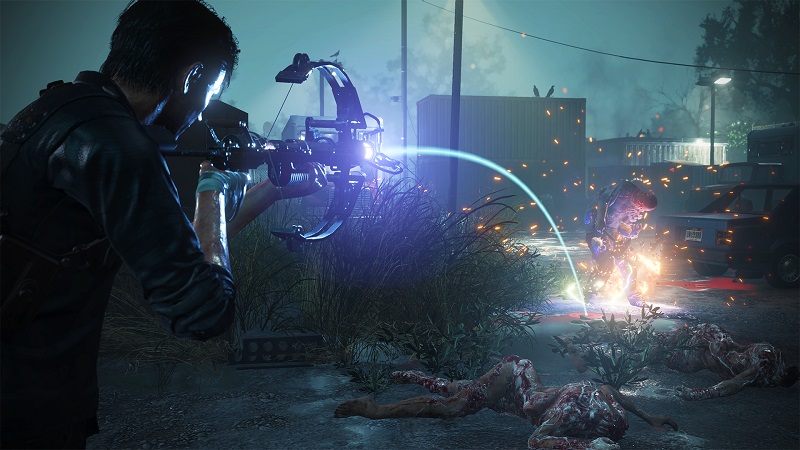
Sebastian must find weapons to defend himself against enemies with his first weapon being a survival knife, while his weaponry comprises of a range of pistols including a semi-automatic, laser sighted, burst and silenced handgun; sawed-off, full-barrelled and double barrel shotguns; harpoon, shock, freeze, smoke and explosive bolt warden crossbows; and an assault rifle in addition to a broken sniper rifle and flamethrower which can both be repaired by acquiring the relevant parts. Safe houses include workbenches which allow Sebastian to craft items such as ammunition from gunpowder, medical supplies through herbs and upgrade weaponry from weapon parts which is essentially in-game currency for weapon upgrades which are gathered from looting bins and breaking softer wooden crates, although field crafting is also a possibility when not located near to a workbench albeit with a higher cost of resources. Weapon upgrades provide major customisation of each weapon throughout four categories including 7 firepower upgrades, 4 ammo capacity upgrades, 3 fire rate upgrades and 4 reload time upgrades for the handgun, although there are varying costs for each upgrade such as 90 weapon parts to improve firepower from 100% to 120%, while a further 10% improvement costs another 100 weapon parts; therefore a lot of weapon parts are going to be required in order to fully upgrade even a single weapon.
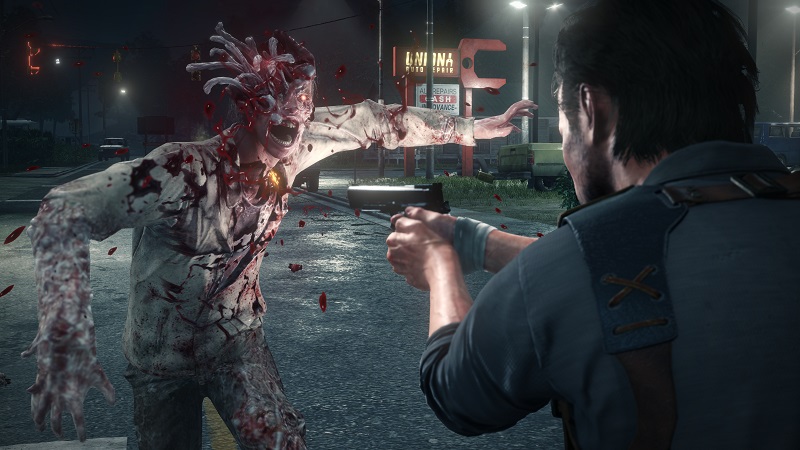
There are also a variety of upgrades for Sebastian himself including 11 health upgrades, 10 athleticism upgrades, 7 recovery upgrades, 10 stealth upgrades and 13 combat upgrades. For Sebastian’s upgrades; green gel is the equivalent of weapon parts with the first combat upgrade reducing reticle sway when firing weapons costing 1,000 green gel, although a more complex upgrade such as synaptic focus in which concentrating during aiming slows down town costs 75,000 green gel, while red gel is required to unlock certain upgrade paths for Sebastian; therefore resulting in Sebastian’s upgrades being as complex to collectively attain than weapon upgrades, especially given that green gel is mostly collected from enemies that Sebastian has defeated.

Inventory items include green gel that can be utilised to obtain increased abilities, while medical syringes administer moderate health restoration, herbs also useful in increasing your health, gunpowder can be used to craft ammunition and much more besides. Look around for coffee makers as drinking a cup of coffee will fully restore Sebastian’s health, although the coffee maker will take some time to brew another pot of coffee, while a supply box is contained within each safe house which is quite useful in replenishing Sebastian’s supplies when running low on quantities of certain items such as ammunition that will gradually replenish for further gathering of supplies.
At the time of writing; the only confirmed downloadable content for The Evil Within 2 is The Last Chance pre-order content which includes the burst handgun as well as a stock of health and ammunition items, although its prequel had an entire season pass featuring three story expansions including The Assignment, The Consequence and The Executioner, therefore it is only a matter of time before we find out if The Evil Within 2 will or will not have its own season pass.
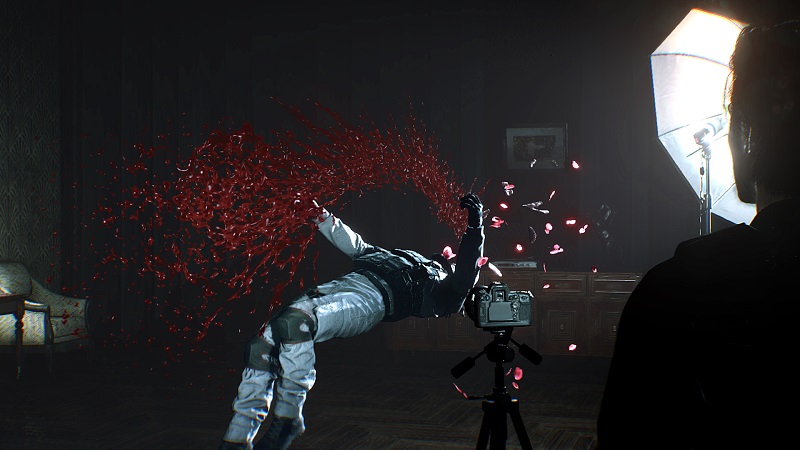
The Evil Within 2’s remote play performance is excellent as it produces the quality of graphics, audio and general performance, while retaining the immense atmosphere from the PS4 version. The controls during remote play have not been optimised resulting in performing melee attacks or firing your weapon and aiming being mapped to the top right and left of the rear touch pad respectively, while sprinting and sneaking moves to the bottom left and right of the rear touch pad respectively, alongside entering the communicator naturally moving from the touch pad to the touch screen. Re-mapping melee attacks or shooting your weapon to R and aiming to L, while utilising the bottom left and right of the touch screen for sprinting and sneaking would have certainly made for a more comfortable remote play control scheme, although it does not prevent The Evil Within 2 from being one of the most atmospheric remote play experiences.

There are two control schemes that are appropriately mapped to the DualShock 4 controller with the type A controls consisting of pressing R2 to fire your weapon or perform a melee attack; pressing L2 to aim; pressing R1 to enter cover; pressing L1 to view your arsenal menu; pressing X to interact with objects, take an item or perform contextual actions; pressing square to reload; pressing O to turn your flashlight on or off; pressing triangle to toggle the communicator; pressing L3 to sprint; pressing R3 to sneak; pressing up, down, left or right on the d-pad for a shortcut to select to select particular item; changing the direction of the left analogue stick to move Sebastian; changing the direction of the right analogue stick to pan the camera around the surrounding environments; pressing the share button takes you to the share feature menu; and pressing the options button to display the pause menu. The alternative control scheme moves sprinting and sneaking to L1 and R1 respectively, while entering cover is mapped to O, alongside turning the flashlight on or off and viewing the arsenal menu becoming L3 and R3 respectively. Tapping the touch pad displays the communicator menu, while vibration occurs during environmental shifting within Union such as when the ground breaks apart. There is no light bar implementation which is surprising given that the light bar could have produced an alternative HUD for Sebastian’s health.

Graphically, The Evil Within 2 is impressive with lighting and shadows playing a big part in realising the atmosphere anticipated in a game within the survival horror genre, alongside the stylistically presented resonances that play out in front of Sebastian after he has utilised his communicator to track signals. Meanwhile, Sebastian’s character model makes him believable as a person with nothing to lose in contrast to the significant quantity of enemy models that look appropriately scary and grotesque as veteran gamers of the horror genre would expect to see.
The presentation of the game is solid with a great user interface across various menus such as the main menu, options menus and gameplay menus with support for navigation via the left analogue stick, directional pad and face buttons, although it does not include support for navigation via the touch pad. Menu backgrounds focus on Sebastian’s office with each set of menus moving the camera to another area of the office, while the right analogue stick pans the camera as though it was from a first-person perspective.
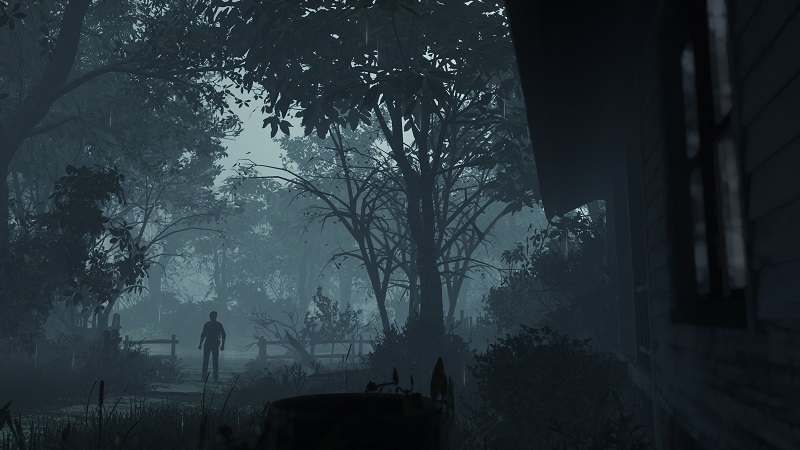
Voice-over artists bring life to the characters including Marqus Bobesich voicing Sebastian Castellanos having also had roles in horror TV series and films such as The Crossbreed, American Horror Story and Survival of the Dead, while Meg Saricks voices Juli Kidman having provided additional voices in Life is Strange: Before the Storm and starred in the Nailbiter films, alongside an entire supporting cast who also perform their respective roles to an equally high standard. Sound effects include Sebastian’s footsteps as he walks or runs, turning the flashlight on or off, looting for supplies, scanning for resonance signals via the communicator, reloading weaponry, performing melee attacks or firing weaponry at enemies and growls from enemies as they become increasingly agitated when convinced a human is nearby. Atmospheric music that is very fitting to the horror gameplay elements is composed by Shuichi Kobori (music composer for Zone of the Enders and Metal Gear Solid 3: Snake Eater) and Masatoshi Yanagi (sound engineer for The Evil Within). The DualShock 4 speaker produces a sound effect to inform the player of the presence of a nearby signal captured by the communicator.

The trophy list includes 52 trophies with 36 bronze trophies, 14 silver trophies, 1 gold trophy and 1 platinum trophy. Easier trophies include the Welcome to Union bronze trophy for taking the plunge into STEM; the DIY bronze trophy for crafting an item for the first time; and the Thinning Them Out bronze trophy for killing 30 enemies. Harder trophies include the Against All Odds silver trophy for completing the story on nightmare difficulty or higher; the You Asked For It…Again gold trophy for completing the story on classic mode difficulty; and the Diligent Reader silver trophy for collecting all files. It is estimated that depending upon skill and a good trophy guide to provide some helpful tips that it would take between 35 to 50 hours to platinum the trophy list.
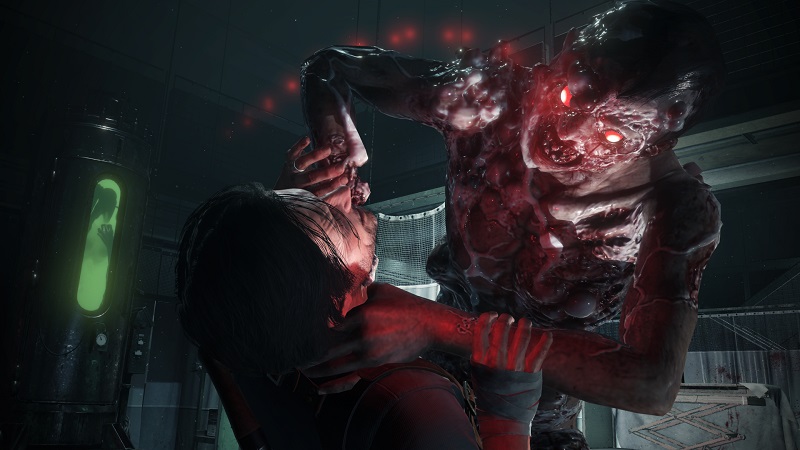
There are three difficulty levels including casual, survival and nightmare with the major differences being that casual difficulty has an abundance of items and enemies inflict significantly less damage, while nightmare difficulty deliberately limits your resources to force players into strategically managing their inventory of items in addition to much tougher enemies that inflict a high quantity of damage per hit, alongside a balance between the two in the form of survival difficulty. However, a customisable area of the difficulty is the ability to have aim assist turned on or off which automatically locks the aiming reticle onto enemies; therefore drastically reducing the difficulty in combat scenarios. Upon completion of the story on any difficulty; a fourth difficulty level named classic will be unlocked which is the same as nightmare difficulty, although there are no autosaves, a restriction of only 7 opportunities to save your progress and the lead character Sebastian cannot upgrade himself or his weaponry; which collectively results in even greater strategic resource management and a seriously cautious approach to every enemy encounter.
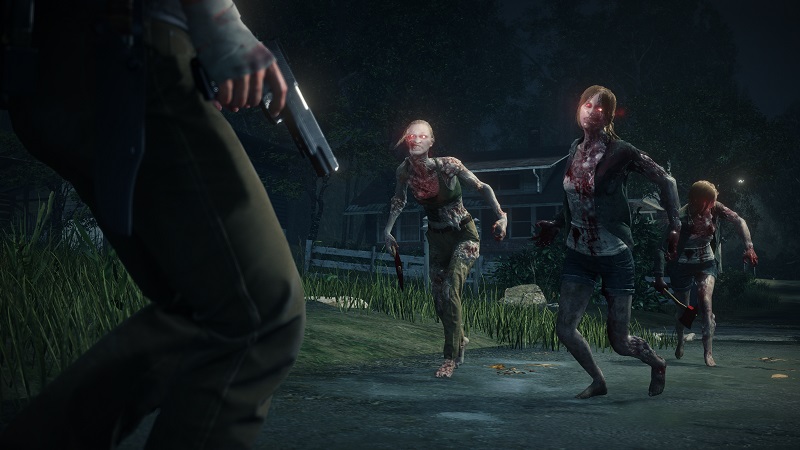
There is no local or online multiplayer components which is not necessarily a bad thing in a story driven survival horror game; however it would have been amazing to play a split-screen or online multiplayer competitive variant based upon the core gameplay of the story in which one player would control Sebastian, while the other player would be able to strategically co-ordinate enemy patrols in search of preventing Sebastian from achieving his mission. There are also no online leaderboards which could have displayed how quickly each player has completed individual chapters and the entire story.
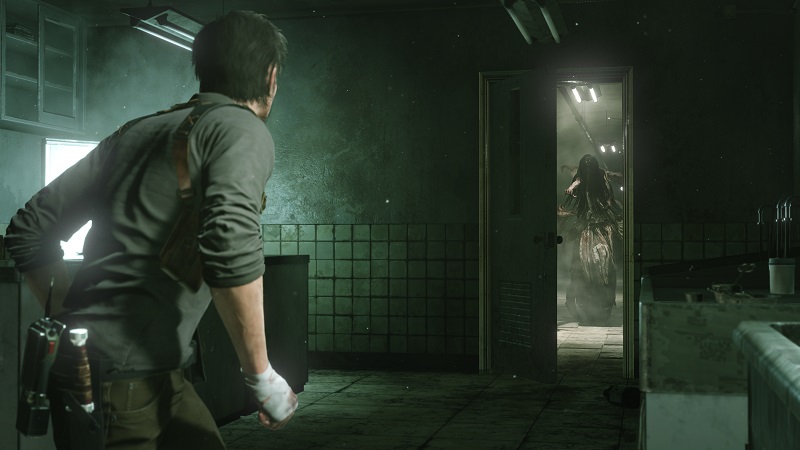
Replayability stems from a variety of areas such as collectibles for the purpose of back story and references to other Bethesda games through Easter Eggs, amazing implementation of looting for resources to upgrade weaponry and Sebastian’s abilities combined with a New Game Plus mode and three difficulty levels with a further unlockable difficulty level; which collectively provides dozens of hours worth of replay value.
Analysis
• Title: The Evil Within 2
• Developer: Tango Gameworks
• Publisher: Bethesda Softworks
• System: PS4
• Format: Retail/PSN Download
• Cross-Buy: No
• Cross-Play: No
• Players: 1
• Hard Drive Space Required: 30.20GB (Version 1.01)
